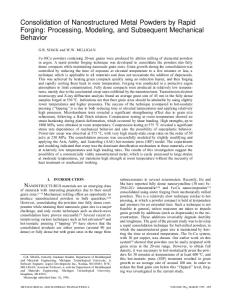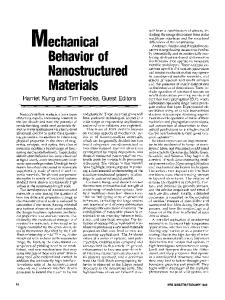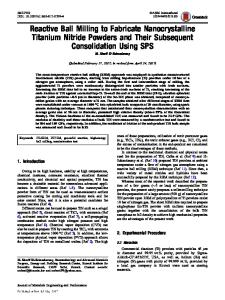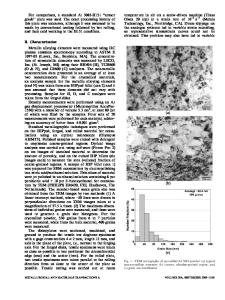Consolidation of nanostructured metal powders by rapid forging: Processing, modeling, and subsequent mechanical behavior
- PDF / 471,936 Bytes
- 10 Pages / 612 x 792 pts (letter) Page_size
- 104 Downloads / 330 Views
ODUCTION
NANOSTRUCTURED materials are an emerging class of materials with interesting properties due to their small grain sizes.[1–4] Mechanical milling offers an opportunity to produce nanostructured powders in bulk quantities.[5,6] However, consolidating the powders into fully dense components while retaining their nanoscale grain size is a major challenge, and only exotic techniques such as shock-wave consolidation have proven successful.[7] Several recent attempts using various techniques such as hot extrusion[8] and hot-isostatic pressing (‘‘hipping’’)[9] have shown that the consolidated products are either porous (around 90 pct dense) or fully dense but with grain sizes in the range from
G.R. SHAIK, formerly Graduate Student, Department of Metallurgical and Materials Engineering, Michigan Technological University, is Software Engineer, Aspect Development Inc., Nashua, NH 03063. W.W. MILLIGAN, Associate Professor, is with the Department of Metallurgical and Materials Engineering, Michigan Technological University, Houghton, MI 49931. Manuscript submitted June 10, 1996. METALLURGICAL AND MATERIALS TRANSACTIONS A
submicrometer to several micrometers. Recently, He and Ma have reported fully dense nanocrystalline (30 nm) Fe29Al-2Cr intermetallic[10] and Fe-Cu nanocomposites[11] consolidated using sinter forging from mechanically milled powders. This is a relatively slow technique similar to hot pressing, in which a powder compact is held at temperature and pressure for an extended time. Such a technique is not feasible in general, unless measures are taken to impede grain growth by additions (such as dispersoids) to the microstructure. These additions invariably degrade ductility and toughness. The goal of the present study was to develop a rapid consolidation technique for ball-milled powders, in which the nanostructured grain size is maintained by limiting the time at elevated temperature. The Fe-Cu system, with 10 pct copper, was chosen. Our earlier work on this system[9] showed that powders can be easily prepared with grain sizes in the 20-nm range. However, to obtain full density, it was necessary to hot-isostatically press the powders for 30 minutes at temperatures of at least 600 7C, and this hot-isostatic press (HIP) treatment resulted in grain growth to an average size of around 100 nm. In order to reduce the final grain size below this ‘‘Hipped’’ level, forging was investigated in the current study.
VOLUME 28A, MARCH 1997—895
Fig. 1—Schematic diagram of the forging die apparatus. The entire die was induction heated inside an argon environmental chamber.
II.
EXPERIMENTAL PROCEDURES
generator to powder temperatures between 500 7C and 1000 7C, using manual control. The heating rate was limited only by the desire to control the temperature and temperature gradients carefully without overheating. Typical heating times were around 1 minute (from room temperature to the forging temperature) but could be reduced with proper coil/die design and development of the induction heater control system. Forging wa
Data Loading...










